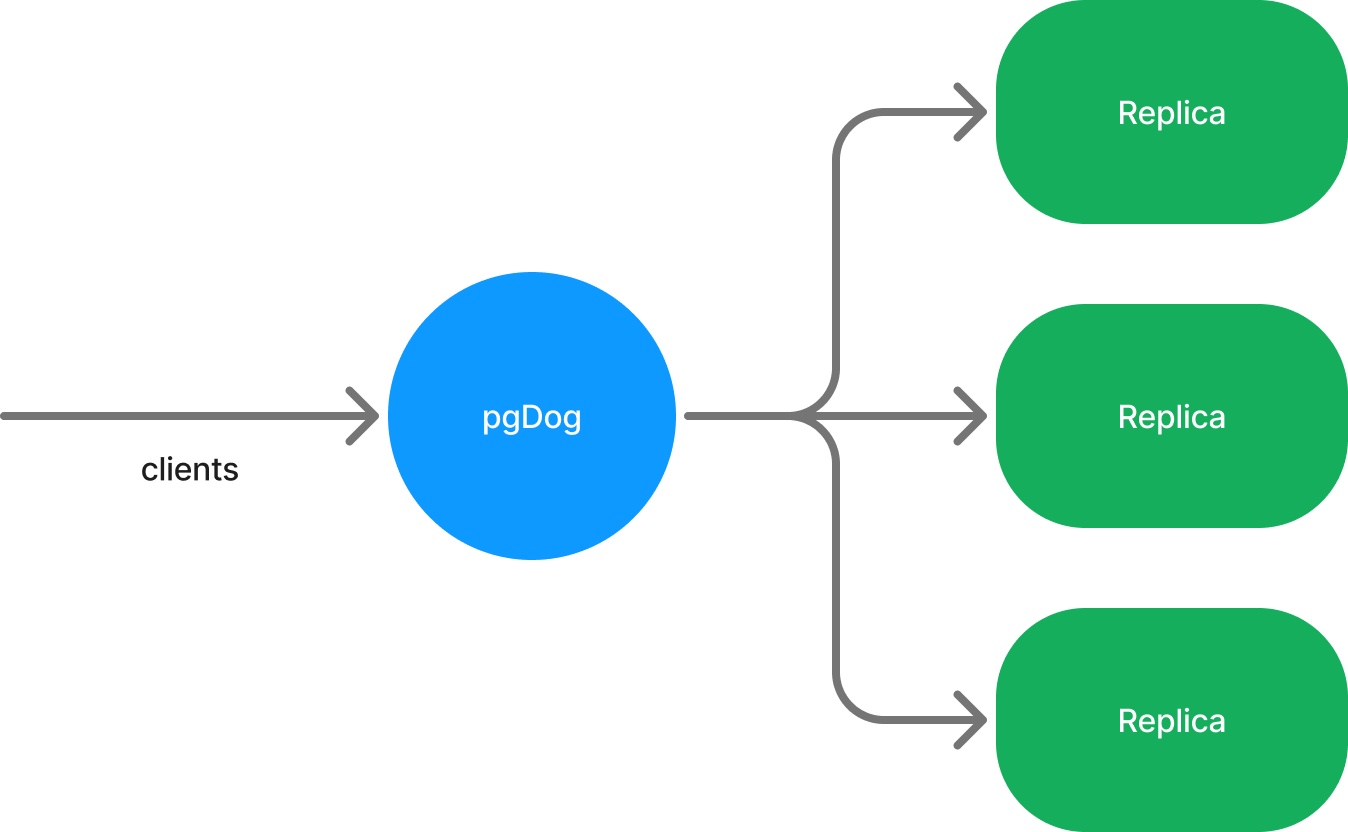Load balancer
PgDog operates at the application layer (OSI Level 7) and is capable of load balancing queries across multiple PostgreSQL replicas.
How it works
When a query is sent to PgDog, it inspects it using a SQL parser. If the query is a SELECT and PgDog is configured to proxy database replicas, it will send that query
to one of the replicas. This allows to distribute queries between multiple databases, spreading the load evenly.

Strategies
The PgDog load balancer is configurable and can route queries using one of several strategies:
- Random (default)
- Least active connections
- Round robin
Choosing a strategy depends on your query workload and the size of replica databases. Each strategy has its pros and cons. If you're not sure, using the random strategy is usually good enough for most deployments.
Random
Queries are sent to a database based using a random number generator modulus the number of replicas in the pool. This strategy is the simplest to understand and often effective at splitting traffic evenly across the cluster. It's unbiased and assumes nothing about available resources or query performance.
This strategy is used by default.
Least active connections
PgDog keeps track of how many active connections each database has and can route queries to databases which are least busy executing requests. This allows to "bin pack" the cluster based on how seemingly active (or inactive) the databases are.
This strategy is useful when all databases have identical resources and all queries have roughly the same cost and runtime.
Round robin
This strategy is often used in HTTP load balancers, like nginx, to route requests to hosts in the same order they appear in the configuration. Each database receives exactly one query before the next one is used.
This strategy makes the same assumptions as least active connections, except it makes no attempt to bin pack the cluster with workload, and distributes queries evenly.
Handling writes
The load balancer can split read SELECT queries from write queries. This strategy is effective 99% of the time, since SELECT queries that write to the database
are rare and are typically used for database maintenance.
Note
SELECT ... FOR UPDATE is routed to the primary because it likely means the
row is about to be updated.
If PgDog detects that a query is not a SELECT, like an INSERT or and UPDATE, and it's configuration contains a primary,
that query will be sent to primary. This allows a PgDog deployment to proxy an entire PostgreSQL cluster without creating separate read and write endpoints.
Configuration
The load balancer is enabled automatically when a database cluster contains more than one database. For example:
[[databases]]
name = "prod"
role = "primary"
host = "10.0.0.1"
[[databases]]
name = "prod"
role = "replica"
host = "10.0.0.2"
Read more
Health checks
Learn how PgDog ensures only healthy databases serve read queries.